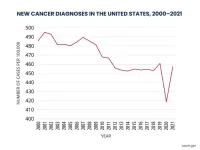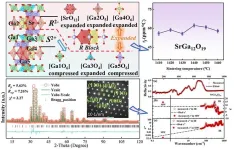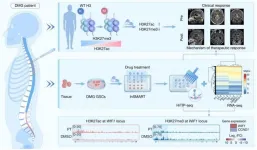The study, published in JAMA Network Open and supported by NIH’s National Institute on Drug Abuse (NIDA), also found that most jails did offer some type of substance use disorder treatment or recovery support (70.1%). The most common reason jails cited for not offering medications for opioid use disorder was lack of adequate licensed staff (indicated by 49.8% of jails). In general, larger jails, those in counties with lower “social vulnerability” (lower levels of poverty and unemployment, and greater education, housing, and transportation access), and those with greater proximity to community-based providers of medications for opioid use disorder were more likely to offer these treatments.
“Offering substance use disorder treatment in justice settings helps to break the debilitating – and often fatal – cycle of addiction and incarceration,” said NIDA Director Nora D. Volkow, M.D. “Though someone may be in jail for only a short time, connecting them to addiction treatment while they are there is critical to reduce risk of relapse and overdose, and to help them achieve long-term recovery.”
The criminal justice system is a crucial point of intervention in the overdose crisis. Overdose is the leading cause of death among people returning to their communities after incarceration. A recent county-level study found that 21% of individuals who died of a fatal overdose had been in jail, a facility for short-term stays, where most people are awaiting trial, sentencing, or serving a short sentence.
Research shows that medications for opioid use disorder – buprenorphine, methadone, and naltrexone – reduce opioid use, prevent overdose deaths, and support long-term recovery. Among people who were formerly incarcerated, access to these medications during incarceration or at release has been shown to reduce overdose deaths, increase use of community-based treatment, and decrease rates of reincarceration. However, access to medications for opioid use disorder in jails remains limited due to various barriers, including cost, staffing, and regulatory challenges.
To update current knowledge of addiction treatment gaps in jails across the country, researchers at NORC at the University of Chicago invited a random sample of 2,791 jails to take a survey on availability of medications for opioid use disorder. These jails were selected to be representative of the over 3,500 jails in the U.S. The researchers collected data between June 2022 and April 2023 and received responses from 1,028 jails, 927 of which were included in analysis. More than half of the participating jails (55.6%) were located in non-metropolitan areas, and many jails offered contracted health care services (59.8%).
The researchers found that more than half of the surveyed jails did not offer medications for opioid use disorder, and that those with direct or hybrid health care services were more likely to provide these medications than those relying on external facilities or with no onsite health care services. For those jails that did offer these medications, buprenorphine was the most commonly provided – available in 69.9% of jails that offered these medications – followed by naltrexone (54.5%) and methadone (46.6%).
The researchers note that even within the jails that offer medications for opioid use disorder, most often these medications are only made available to people who are pregnant, or to those who were already receiving any of these medications at the time of their arrest. The research team is conducting additional analyses to better understand the barriers to universal medication availability within jails.
“Data on health care gaps for people who are incarcerated provides a necessary knowledge base to help policymakers, public health officials, researchers, and communities assess where to allocate resources to improve care for opioid use disorder for this population,” said Elizabeth Flanagan Balawajder, senior research associate at NORC at the University of Chicago and the study’s corresponding author. “Our findings suggest that supporting areas such as staff training, infrastructure improvements, and partnerships with community treatment providers are key areas to improve substance use disorder treatment for people in jail.”
While this study provides the most comprehensive overview to date of the availability of these medications in U.S. jails, its limitations include low rates of jail responses, reliance on self-reported data, and a lack of assessment of the quality or outcomes of addiction treatment programs. Future research will include evaluating the impact of providing these medications on health outcomes for the people in jail, as well as exploring sex, gender, race and ethnicity-related disparities in access to medications for opioid use disorder within the criminal justice system.
This study was conducted by researchers in the NIDA-funded Justice Community Opioid Innovation Network (JCOIN), which is supported through the NIH Helping to End Addiction Long-term Initiative, or NIH HEAL Initiative. The study included contributions from experts at the University of Illinois Chicago, Baystate Health, the University of Massachusetts Chan Medical School-Baystate, the University of Chicago’s Crown Family School of Social Work, Policy and Practice, the Department of Medicine and Public Health Sciences at the University of Chicago, and NIDA.
Under the Biden-Harris Administration, the Department of Health and Human Services has taken several steps that expand access to medications for opioid use disorder and addiction care to people who are incarcerated. For examples, see new guidance from the Centers for Medicare & Medicaid Services, new funding opportunities through the Health Resources and Services Administration, and SAMHSA’s Adult Reentry Program Grants.
The NIH Helping to End Addiction Long-term® and NIH HEAL Initiative® are registered service marks of the Department of Health and Human Services.
If you or someone you know is struggling or in crisis, help is available. Call or text 988 or chat at 988lifeline.org. To learn how to get support for mental health, drug or alcohol conditions, visit FindSupport.gov. If you are ready to locate a treatment facility or provider, you can go directly to FindTreatment.gov or call 800-662-HELP (4357).
Reference: EF Balawajder, et al. Factors associated with the availability of medications for opioid use disorder in US jails. JAMA Network Open. DOI: 10.1001/jamanetworkopen.2024.34704 (2024).
###
About the National Institute on Drug Abuse (NIDA): NIDA is a component of the National Institutes of Health, U.S. Department of Health and Human Services. NIDA supports most of the world’s research on the health aspects of drug use and addiction. The Institute carries out a large variety of programs to inform policy, improve practice, and advance addiction science. For more information about NIDA and its programs, visit www.nida.nih.gov.
About the National Institutes of Health (NIH): NIH, the nation’s medical research agency, includes 27 Institutes and Centers and is a component of the U.S. Department of Health and Human Services. NIH is the primary federal agency conducting and supporting basic, clinical, and translational medical research, and is investigating the causes, treatments, and cures for both common and rare diseases. For more information about NIH and its programs, visit www.nih.gov.
About substance use disorders: Substance use disorders are chronic, treatable conditions from which people can recover. In 2023, nearly 49 million people in the United States had at least one substance use disorder. Substance use disorders are defined in part by continued use of substances despite negative consequences. They are also relapsing conditions, in which periods of abstinence (not using substances) can be followed by a return to use. Stigma can make individuals with substance use disorders less likely to seek treatment. Using preferred language can help accurately report on substance use and addiction. View NIDA’s online guide.
NIH…Turning Discovery Into Health®
END








